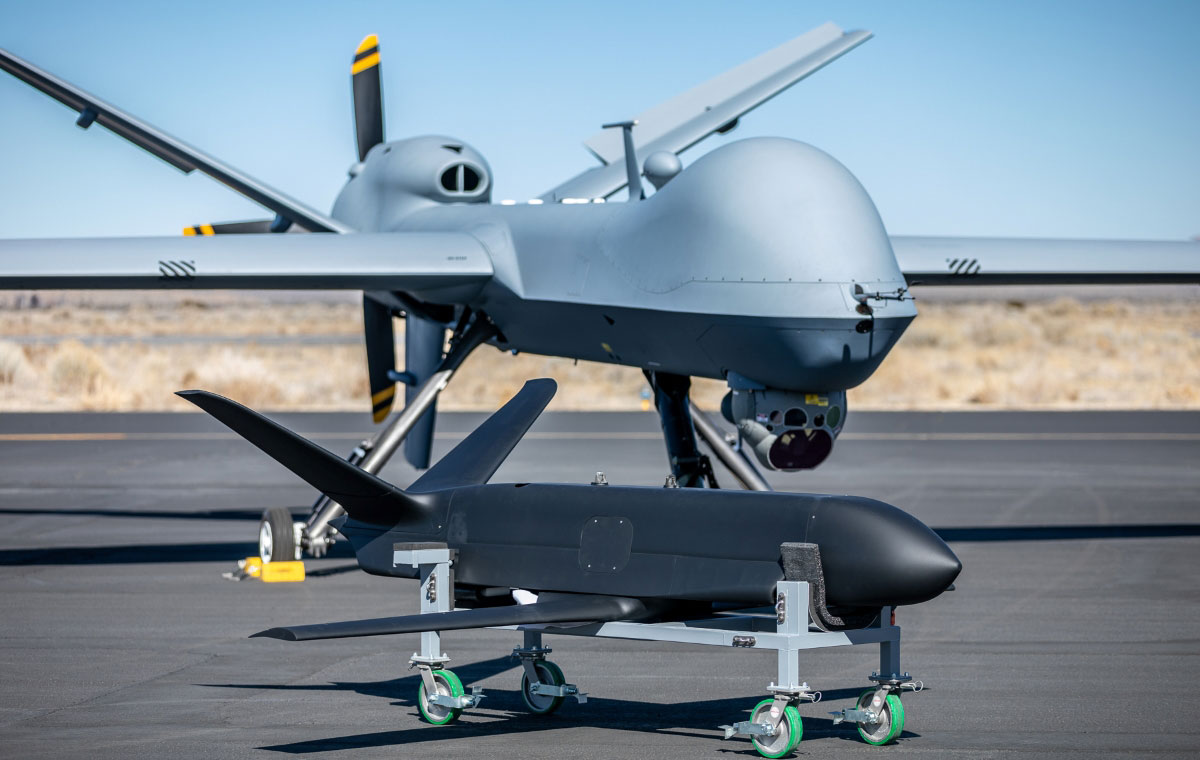General Atomics Aeronautical on metal Additive Manufacturing’s place at the centre of the digital manufacturing revolution
General Atomics Aeronautical Systems, Inc. (GA-ASI) is the world leader in the design and manufacture of Unmanned Aircraft Systems (UAS). The company is no stranger to AM, with its Additive Design and Manufacturing Center of Excellence being integral to the qualification of more than 300 AM flight components and the installation of more than 10,000 AM parts on its aircraft. Now, it is working to identify and partner with some of the most innovative players in the industry in order to further leverage the capabilities of the technology. Divergent Technologies, the company behind Czinger Vehicles, is one such company. Jeff Kerns reports for Metal AM magazine. [First published in Metal AM Vol. 9 No. 2, Summer 2023 | 20 minute read | View on Issuu | Download PDF]
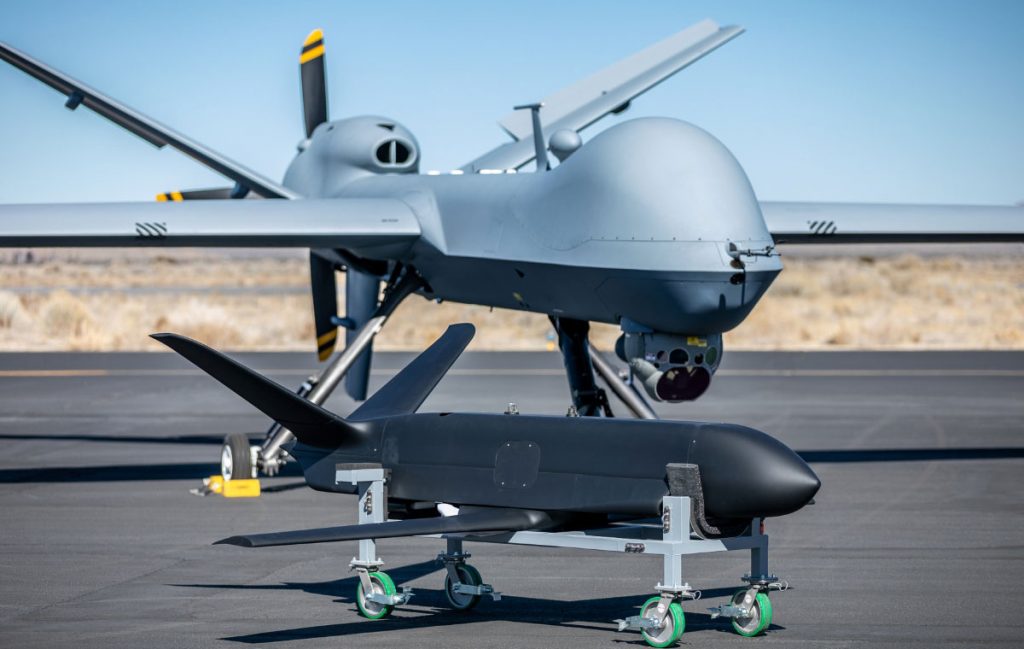
General Atomics Aeronautical Systems, Inc. (GA-ASI), based in San Diego, California, is a leading developer of advanced technology solutions for government and commercial applications. Known most widely for its Predator unmanned aerial vehicles, the company is privately owned and vertically integrated, and describes itself as having “the freedom to invest in the most innovative technologies, and the resources to deliver them as products for customers around the world.” It, therefore, comes as no surprise that the company has been a significant player in the Additive Manufacturing industry for a number of years with its own in-house AM capabilities.
A recent partnership caught headlines when it was announced that GA-ASI was able to move from the design phase of a new Remotely Piloted Aircraft to functional prototype hardware in less than five months using metal Additive Manufacturing. What was particularly surprising was that the partner that helped to enable this speed of development was Divergent Technologies, a small company better known for a record-breaking additively manufactured hypercar and a bold ambition to turn automotive manufacturing on its head.
What Divergent Technologies brought to the table was its Divergent Adaptive Production System (DAPS), a metal AM-based digital manufacturing solution that was able to supercharge the speed of product development and manufacturing for a new generation of applications coming out of GA-ASI’s Additive Design and Manufacturing Center of Excellence and its advanced engineering programme teams.
This unlikely industry collaboration not only shines a light on how metal AM can now be considered as a critical solution on the path to making digital manufacturing a reality, but also how a company such as General Atomics Aeronautical Systems (GA-ASI), through its position as a lead systems designer and integrator, is able to identify and leverage existing expertise in the wider AM field and bring diverse parties together as expert collaborators to deliver the most complex of systems, packed with emerging technology capabilities.
As advanced manufacturing within defence requires the expertise of many partners, GA-ASI performs the role of identifying potential collaborators, qualifying their capabilities, and then integrating them into the larger cohort that is responsible for delivering the entirety of the UAS system.
This article offers insight into how GA-ASI is exploring the emerging capabilities of Divergent, its latest official partnership in the metal AM space following previously announced collaborations that include Australia’s Conflux Technology for heat exchangers, and Norway’s Norsk Titanium for large structural AM components.
With its leading profile in the industry, General Atomics Aeronautical Systems (GA-ASI) is prioritising the integration of some of the most innovative companies in the metal AM community, attracting collaborators from other industries such as oil and gas, and automotive, as well as providing real opportunity to grow AM’s acceptance in the wider aerospace industry and beyond.
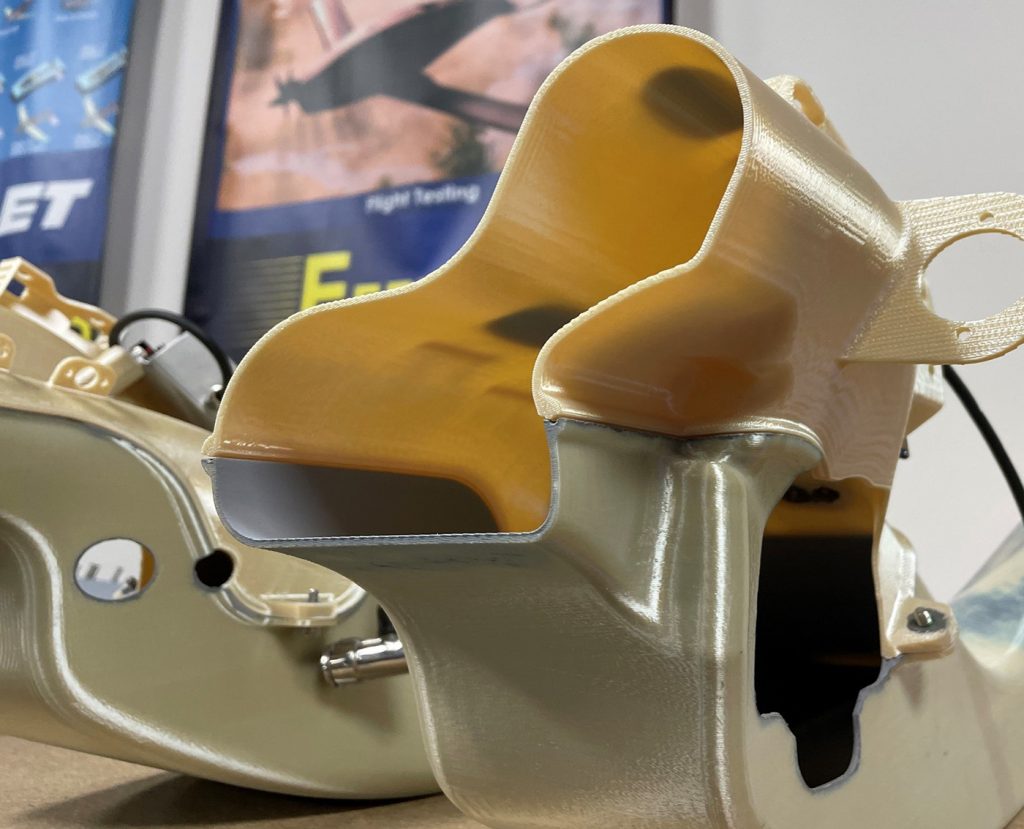
Additive Manufacturing at General Atomics Aeronautical Systems
GA-ASI is by no means a newcomer to AM, having qualified hundreds of flight components produced by various processes. It is estimated that the use of AM parts on its MQ-9B UAS platform alone has saved the company over $2 million in tooling costs and over $300,000 per aircraft in recurring cost avoidance by using approximately 240 additively manufactured parts.
It was back in 2017 that the company produced its first metal AM part, in titanium, for its MQ-9B SkyGuardian UAS platform (Fig. 3). Its interest in Additive Manufacturing, however, dates back even further, to 2011, when it started adopting Additive Manufacturing for shop aids, fixturing, and design iterations. The company began with a Polyjet machine, but its journey into AM progressed quickly. More polymer AM technologies followed, as did exploring new materials and design strategies. It was this ongoing investment in an ‘AM ecosystem’ that laid the groundwork for its metal Additive Manufacturing activities.
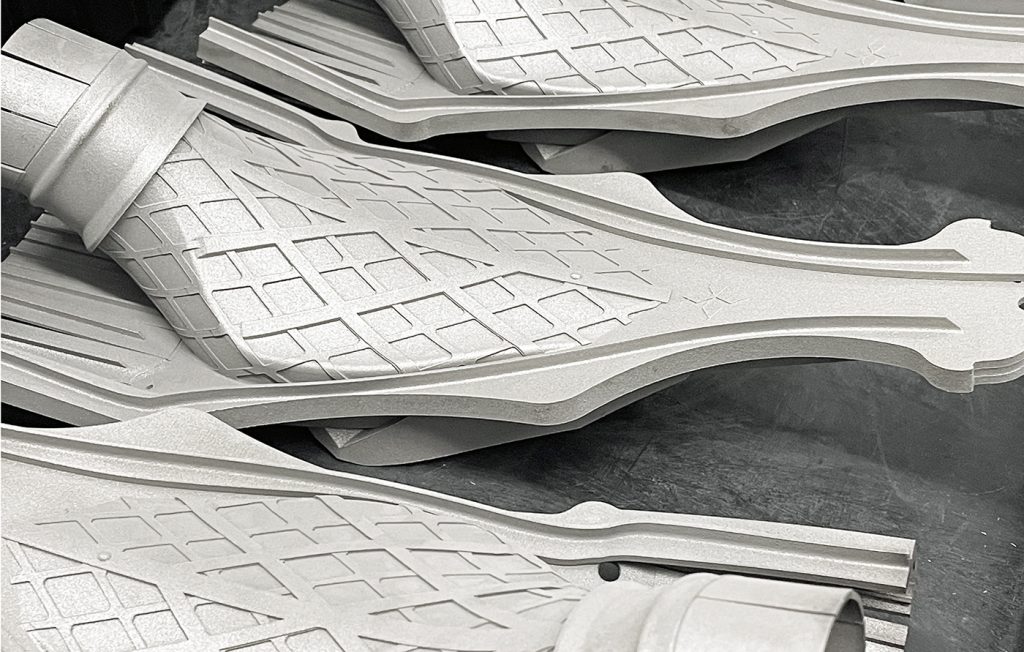
In 2018, GA-ASI’s leadership created a dedicated Additive Manufacturing department, which worked to develop a strategic roadmap for AM, grow an internal subject matter expert team, and establish flight hardware production capabilities. Three years later, in 2021, GA-ASI opened its Additive Design and Manufacturing Center of Excellence to bring additional synergies for developing and qualifying AM applications that would deliver a positive business case over conventional manufacturing methods (Fig. 4). The benefits of metal AM for GA-ASI’s aircraft and customers were clear.
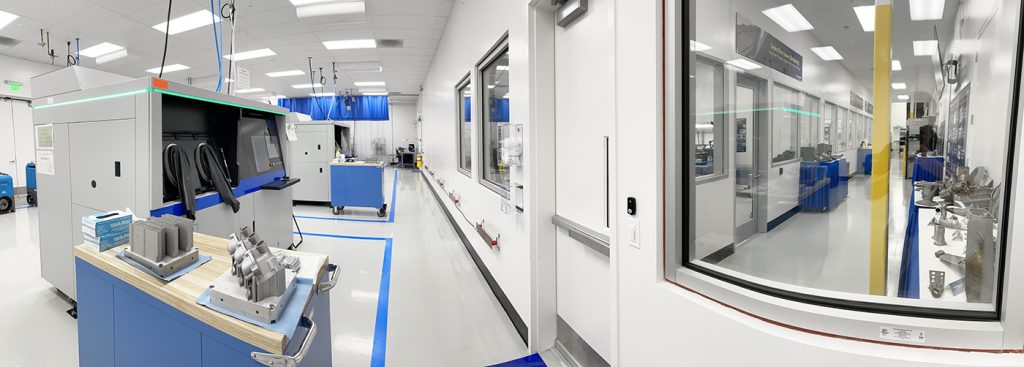
Steve Fournier, Senior AM Manager at General Atomics Aeronautical Systems (GA-ASI), explained the fundamental differences between GA-ASI’s approach to polymer and metal AM, stating, “When thinking about metal AM for the long run, it’s really about changing manufacturing through the integration of multiple components. For plastics, material properties don’t allow for this. For example, you can find value in printing a plastic or composite bracket but, because of the material properties, you can’t print a plastic heat exchanger with built-in brackets. Plastic can limit the ability to combine parts since structural loading typically increases with the level of part integration. Fortunately, metal AM can work well for this, and this kind of approach is necessary to justify the higher cost of the metal AM technologies.”
This recognition that metal Additive Manufacturing can progress towards its potential when combining multiple parts into one, and be even more effective when used to create completely new systems – such as airframe or sub-assemblies – meant that the potential of the Divergent Adaptive Production System (DAPS) for aerospace manufacturing was quickly recognised.
DAPS as a catalyst for innovation
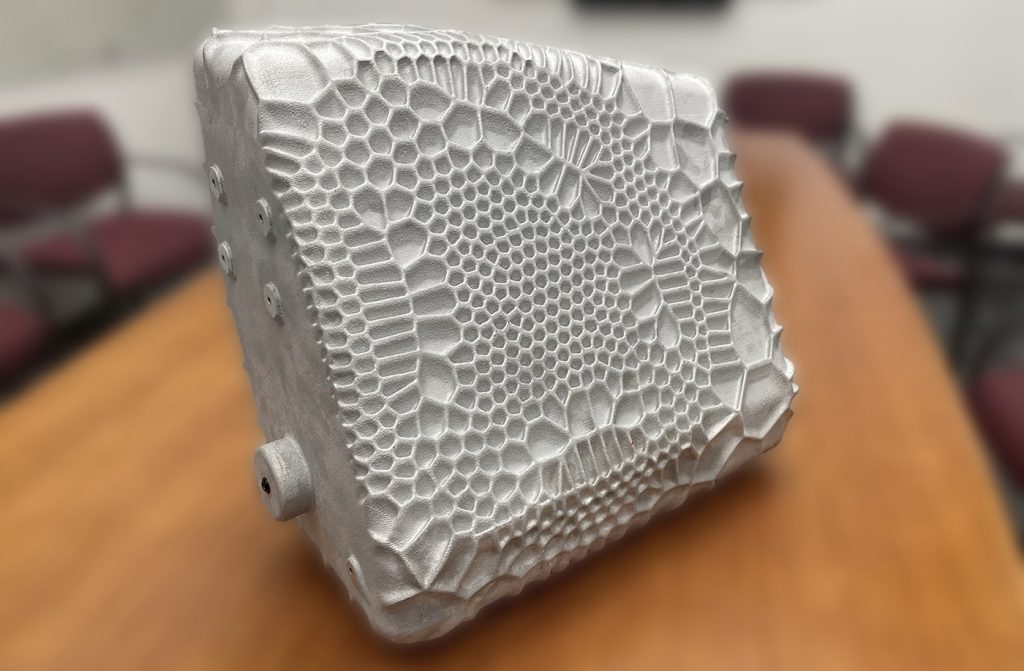
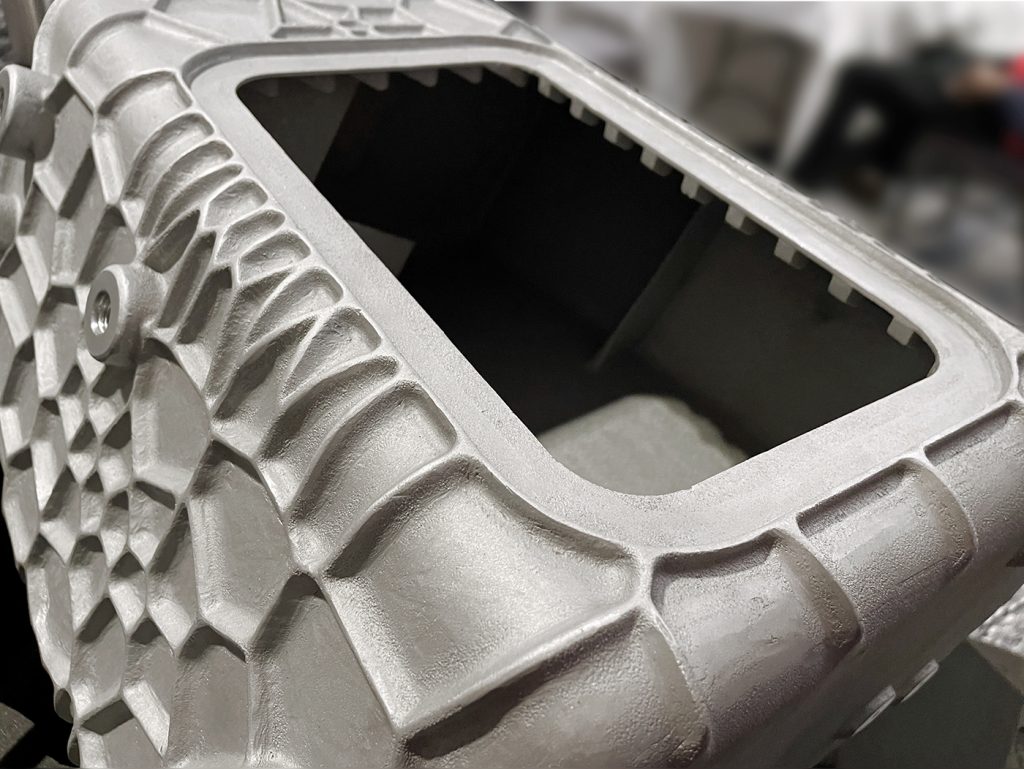
GA-ASI’s first metal AM application, from 2017, combined four parts into one. Its new UAS airframe, developed using the DAPS system, took this to the next level, reducing 180 individual parts into just four modular nodes. Two of these nodes are shown in Figs. 5 and 6. The process leveraged model-based, Artificial Intelligence-driven, and topology-optimised designs, reducing total part count by over 95% while meeting weight targets.
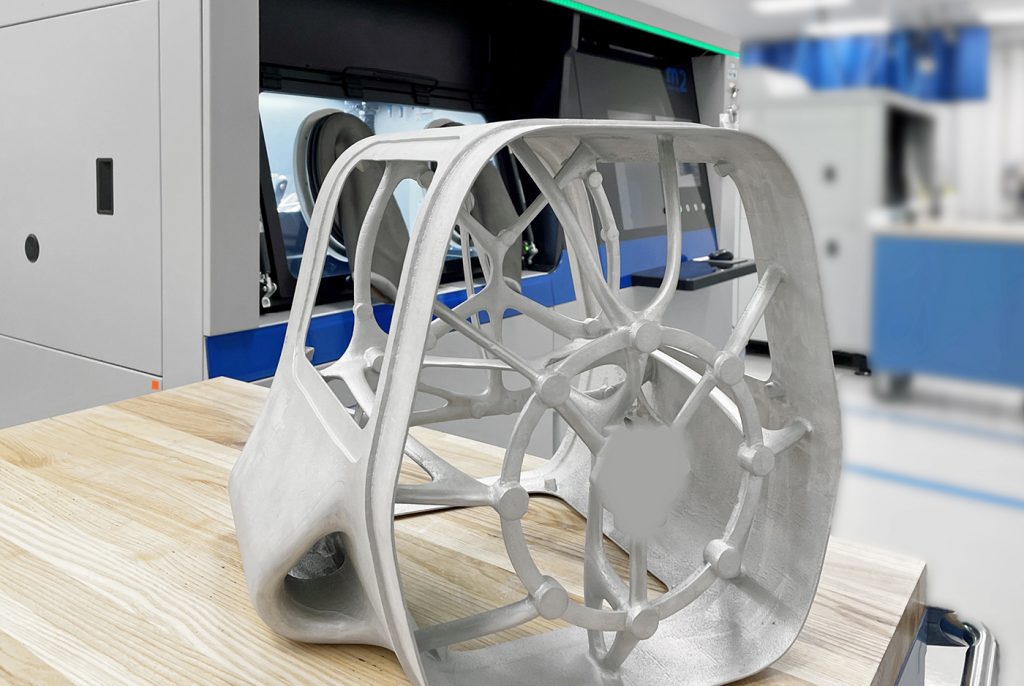
Whilst such dramatic part consolation using metal AM is not new, General Atomics Aeronautical Systems (GA-ASI) and Divergent’s wider focus was on using DAPS as a manufacturing solution to address system-level challenges. Given a set of digital requirements as the input, DAPS offers the capability to automatically computationally design, additively manufacture, and assemble complex structures.
The DAPS process inspected each metal AM component (or node) by creating a full digital twin of the small UAS (SUAS) which was then applied to a fully automated, toolless robotic assembly process that took less than 20 minutes to complete. This process enabled the team to go from a print-ready SUAS design to a fully assembled deliverable airframe in less than two days. The system can also move seamlessly between different products, with zero switchover time. This innovative approach to design and manufacturing results in performance-optimised designs that can be produced at a substantially lower airframe recurring cost.
Prior to its partnership with General Atomics Aeronautical Systems (GA-ASI), Divergent Technologies had already achieved considerable success in the implementation of its digital manufacturing solutions in the automotive sector with DAPS. Having qualified as a Tier 1 supplier for additively manufactured chassis and suspension assemblies in automotive, seven global automotive manufacturers went on to select Divergent structures for future vehicle production.
The applicability of the technology to the next generation of UAS is clear. “We are focusing on ‘blank canvas’ next-generation aircraft designs,” stated Fournier, “A key aspect of the working relationship between the GA-ASI and Divergent is how effectively we can integrate and make those DAPS vs traditional decisions in a fully data-driven and digitally connected way, leveraging Divergent’s developed software tools and GA-ASI system-level design approach and knowledge. DAPS also links, and leverages, all of the digital design and manufacturing data throughout the process. Every single component that is manufactured is scanned to optimise assembly and enable automated inspection. This critical data is then also used for redesigns or extrapolation of where opportunities are and how to make improvements to overall system performance.”
Michael Kenworthy, CTO of Additive Manufacturing at Divergent Technologies, explained, “Fixed process and point qualification (e.g. tying production to a specific machine serial number) doesn’t scale, but the type of massive data sets required to shift to a qualified process stance (600+ tensile and fatigue witness specimens as part of routine series production weekly) simply hasn’t existed until now – we are focused on building out these key understandings and sharing what we have learned with our 1 of 1 DAPS solution to support our partners like GA-ASI. In the end, this will greatly accelerate Additive Manufacturing adoption as we won’t continue to waste massive resources on a global scale addressing the same concerns over and over again for each individual part.”
With DAPS, GA-ASI and Divergent are able to bring together a host of advanced technologies with metal Additive Manufacturing at the centre. Knowing that each step, from development to assembly, is automated within one system provides a number of benefits that would otherwise be unachievable. “Divergent has created a system with the ability to avoid tolerance stack-ups regardless of the number of parts and design solutions to support automated assembly. Without fixtures or tooling, we can move rapidly between UAS mission variants. Additionally, advanced joining techniques enable complete galvanic isolation between nodes so it is easier to design with multi-material structures in mind,” stated Fournier.
Divergent’s joint architecture also ensures a high level of predictability. Structural designs and analysis models ensure failure modes are well-controlled and occur reliably and predictably within the parent substrate as opposed to the joint.
A modular future
The DAPS solution avoids the need to amass tooling and fixtures for production, both of which limit a company’s ability to adapt quickly to design changes, new applications and production variations. However, the use of modular nodes by DAPS, driven in part by the need to produce them within the current size restraints of existing large format Laser Beam Powder Bed Fusion (PBF-LB) machines, is also a factor behind the system’s flexibility.
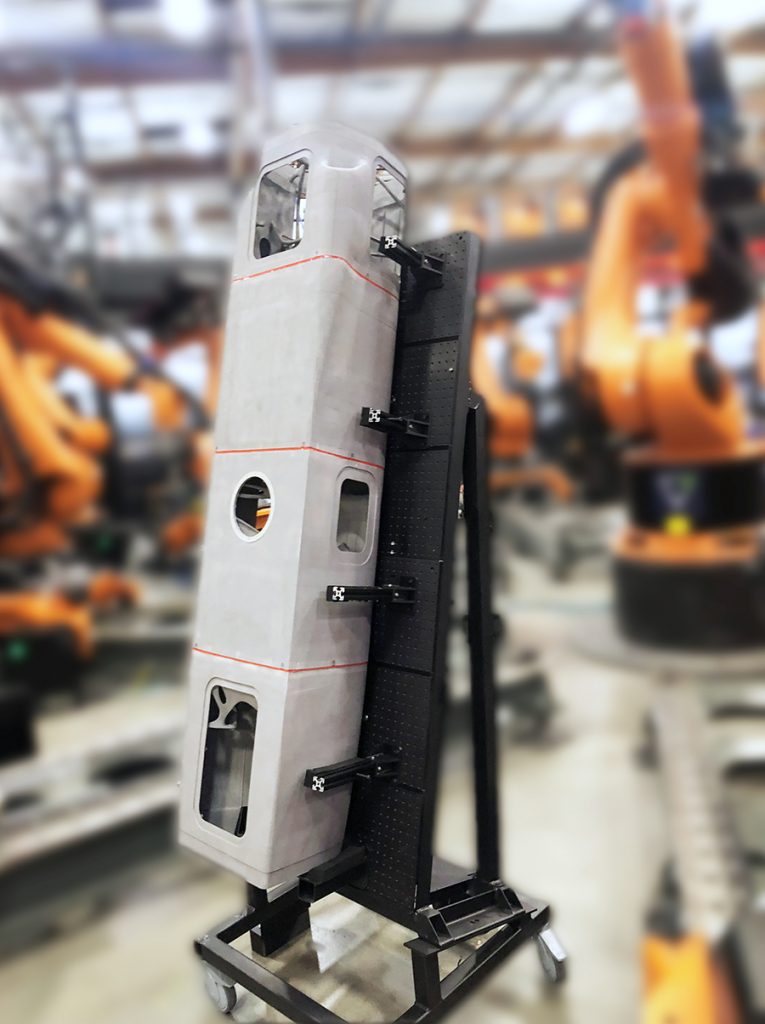
Fortuitously, there are clear synergies between DAPS and the Modular Open Systems Approach (MOSA), used in the field of defence and aerospace in particular, to design and develop complex systems based on the principle of modularity. As with Divergent’s nodes, modular components are designed with well-defined interfaces to integrate easily into designs that can be developed, tested, and deployed independently. This design and manufacturing architecture offers the potential for distributed manufacturing and assembly near-theatre.
Modular open systems balance customisable platforms with specific parameters and interfaces for standardised production. As technologies become seamless and open, the MOSA also makes it easier for others to enter the field. Increasing competition pushes companies that rely on old relationships and strategies, such as vendor lock-in, to think more dynamically and compete in an open systems environment.
Strategic implications for defence manufacturing
With the coming together of two advanced lines of innovation that appear to support and propel one another, the convergence of digital manufacturing and metal AM is seen as transformative for national defence supply chains. GA-ASI’s contracts with the US Department of Defense (DoD) target improved speed and agility for defence supply chains.
GA-ASI aims to increase the proportion of additively manufactured parts on the Bill of Materials (BOM) of small UAS platforms to up to 90%. Additionally, it plans to increase the number of AM parts used on larger UAS platforms. DAPS is already AS9100 certified and uses advanced custom aluminium alloys that are ideally suited to advanced aerospace solutions.
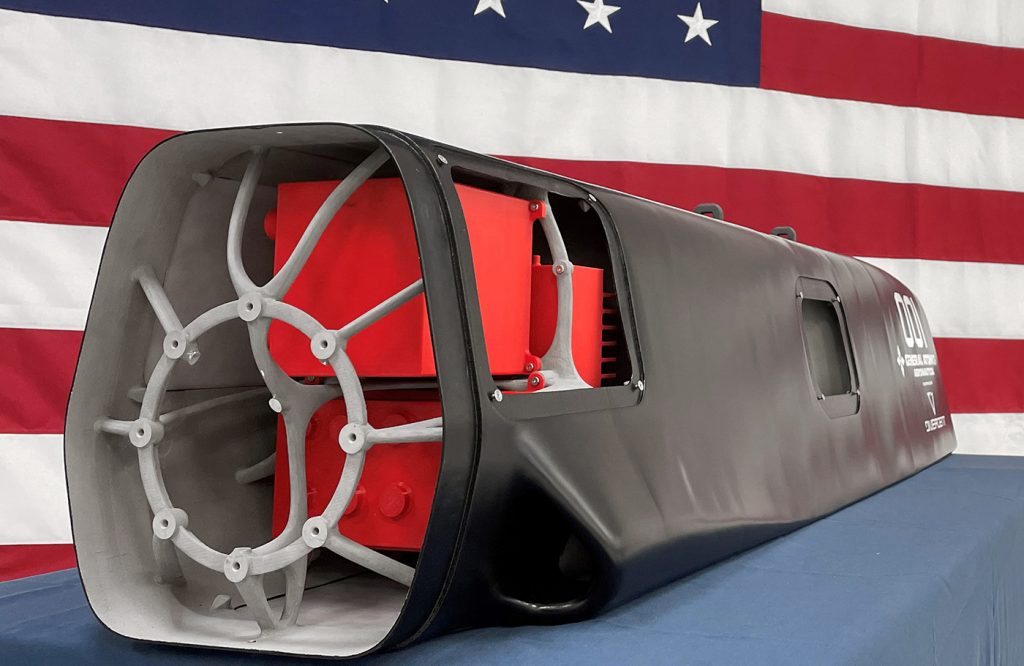
Worldwide, governments and defence departments are not just interested in reducing part counts or developing advanced solutions to streamline supply chains, but in developing flexible and adaptable manufacturing systems, and there is no doubt that metal Additive Manufacturing is at the forefront of activities. GA-ASI is leading with the belief that if there is a better way to do something, and provide a strategic advantage to its customers, they should do it that way after proper engineering qualification. It is an approach to systems integration that fully leverages its capabilities as a ‘technology scout’ for the most appropriate advanced manufacturing solutions for the right DoD platform’s risk posture.
Outlook
Partnerships such as that between GA-ASI and Divergent are creating manufacturing solutions that will inevitably become standard manufacturing practice. Of course, no single capability, technology, or process will shape the unmanned aerial vehicle industry or manufacturing more broadly.
When announcing its upcoming modular Gambit aircraft series, GA-ASI used this compelling metaphor that offered a glimpse towards the future of metal AM enabled digital manufacturing when it stated, “Imagine watching a wheelset, chassis, and powertrain produced on an automotive assembly line. One kit might turn left in the factory and become a luxury sedan. The next might turn right and become the family economy model. The common platform saves cost and complexity for the manufacturer. The different trim and other options offer choice and value to the buyer. Not only can this approach address wide market segments of customer needs, but it also provides affordability. High-rate manufacturing of the core system enables extreme cost savings to all the variants that come from the common platform,” explained Fournier.
With fierce competition in manufacturing technology, companies that thrive may not be the strongest or the smartest, but the ones that adapt the fastest. GA-ASI is investing in metal AM technologies and associated partnerships for faster iterations, reduced time to market, simplified supply chains, dynamic mass production, and the ability to place production cells close to where they are strategically required.
The key to this is finding partners that excel in their niche and bringing them together in dynamic, flexible ways. The partnership between General Atomics Aeronautical Systems and Divergent may well be setting the foundations for new systems, standards, and practices as metal AM matures.
Further information
General Atomics Aeronautical Systems, Inc.
www.ga-asi.com
Author
Jeff Kerns
[email protected]
Based in New York, Jeff is an automation engineer, technical writer, and consultant.
Divergent Adaptive Production System (DAPS) overview
The DAPS solution is an end-to-end digital thread which replaces traditional manufacturing with a completely modular digital factory, complete with generative AI, Additive Manufacturing, and robotic assembly. It begins with entering parameters into a generative AI CAD program, where the software creates parts or structural sections called nodes. Each node is designed with compatible interfacing in mind, creating the potential for modular variations, as well as the start of the digital thread that will evolve into a functional digital twin.
When the node design is complete, it is sent to a Laser Beam Powder Bed Fusion (PBF-LB) machine for production before going through automated post-processing to remove powder and supports. Each step is documented, and has inline management and inspection to ensure that the digital and real parts are similar. Finally, a team of robotic arms assembles each node into a finished assembly.
The technology allows for full scalability with the simple addition of more units. Furthermore, the information gathered from the digital thread of the product’s lifecycle creates a digital twin, allowing real-world, physical data to enter the AI and be integrated into further iterations.
Download Metal AM magazine






